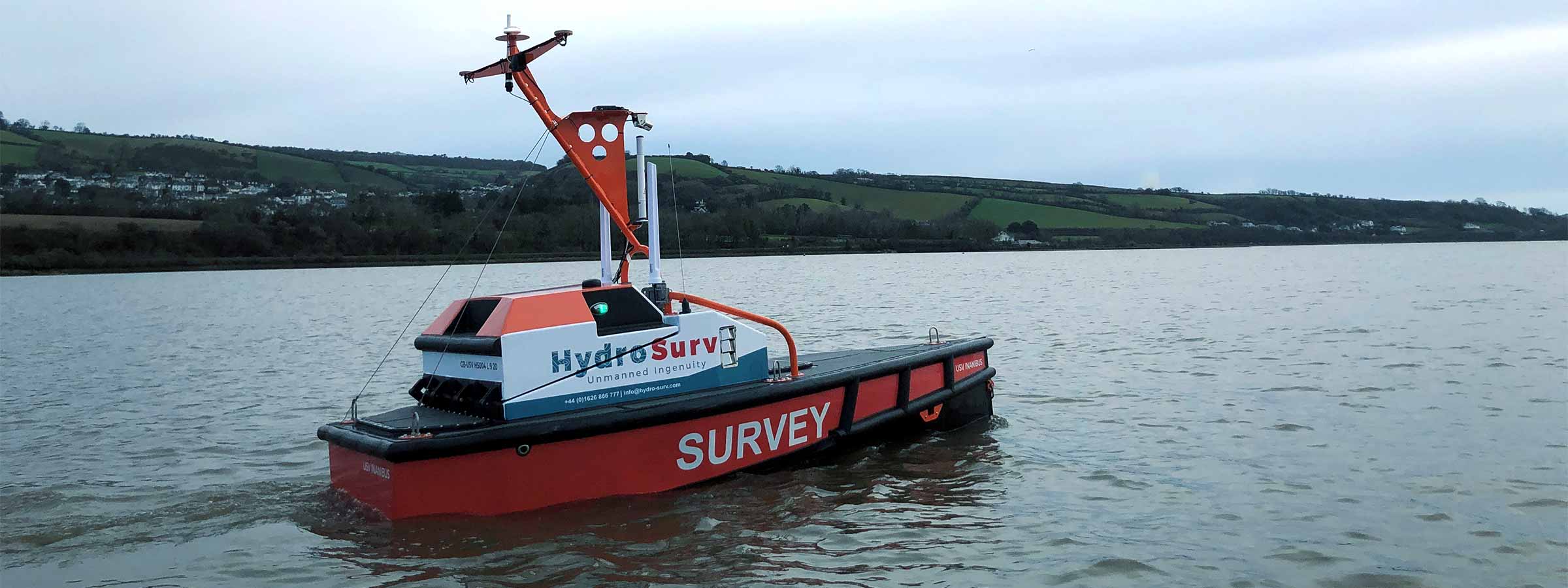Uncrewed surface vehicle (USV) designer, builder and operator HydroSurv Unmanned Survey is joining forces with global marine technology specialist Sonardyne to develop and demonstrate transformative seabed-to-shore technologies for the offshore wind industry.
Through a collaborative project, part-funded by Innovate UK through its Robotics for a Safer World: extension project, HydroSurv’s REAV-40 USV will be paired with intelligent seafloor and vessel-mounted instruments from Sonardyne, alongside cloud-based services, to provide an end-to-end seabed-data-to-shore service.
This will include Sonardyne’s Mini-Ranger 2 Ultra-Short BaseLine (USBL) acoustic positioning system and its SPRINT-Nav hybrid acoustic-INS navigation instrument, which provides USV platforms with navigational redundancy both for when GNSS is compromised and where DVL bottom lock is out of range. Used in combination with Sonardyne’s seafloor sensors and access to cloud-based services, this package provides an integrated suite of capabilities to maximise the use of USVs in remote offshore environments.
Key elements of the new project include a self-transiting USV, acoustic positioning of and data harvesting from seabed instruments, real-time gathering of geo-referenced current profile data and live relay of information to operatives onshore through secure cloud-based systems. The project will also demonstrate the ability to overcome potential navigational limitations working in and around wind farms.
Founded in 2019, HydroSurv has seen rapid expansion of its technologies into inland and nearshore waters. This latest project, which officially launches in April 2021, will see the company now enter the offshore domain.
The culmination of the project will be a series of demonstrations at an operational offshore windfarm site within the UK.
[blockquote author=” David Hull, Founder & CEO at HydroSurv”]”The coronavirus pandemic has further underlined the benefit of using resilient USVs and flexible instruments, which enable continuous data-flow without sending personnel offshore. This has never been more important than today to safeguard routine monitoring and survey capabilities. Over the longer term, this approach will reduce the cost, risk, time and carbon footprint of gathering operational data.”[/blockquote]
“Combining USVs like HydroSurv’s REAV-40 with our seabed-data-to-shore technologies promises to bring a step change in the efficiency of asset monitoring and data gathering operations for the offshore wind industry,” says Geraint West, Global Business Manager, Oceanographic, at Sonardyne. “Using USVs, which can be deployed at short notice, can vastly reduce operator logistics, emissions, risk to humans and costs and will allow operators faster access to operationally important information about their wind farms.”
